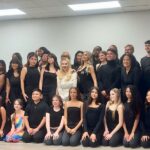Visual marketing in New York City is evolving fast, blending tech, culture, and street-level storytelling to redefine how brands connect with audiences. The shift isn’t just aesthetic, it’s strategic. In a city where attention is fleeting and competition is constant, visuals have become a primary language for engagement. Brands are moving beyond static signage and into immersive, responsive formats that reflect the city’s energy and diversity.
From subway ads that react to foot traffic to storefronts that double as interactive installations, visual marketing in NYC is no longer about being seen, it’s about being felt. Campaigns are designed to live in motion, adapting to their surroundings and inviting participation. A Lower East Side mural might unlock exclusive content through a QR code, while a SoHo window display could shift based on time of day or trending topics. These visuals are built to be experienced, not just observed.
In a city where every block carries its own rhythm, brands are reimagining their presence. Visuals are now tools for sparking emotion, driving conversation, and embedding into the cultural fabric of neighborhoods. Whether it’s a mobile billboard rolling through Queens or a branded pop-up gallery in Tribeca, the goal is no longer just conversion, it’s connection. Visual marketing in NYC has become a form of urban storytelling, where design meets dialogue and every placement has purpose.
Visual Marketing Is Shaping NYC’s Street-Level Brand Identity
Visual marketing in NYC has always been bold, but now it’s becoming smarter. Brands are leveraging data-driven design, AI-powered personalization, and hyperlocal aesthetics to make their visuals feel native to the city’s rhythm. A campaign isn’t just placed, it’s embedded. Think digital billboards in Times Square that shift messaging based on weather, or pop-up murals in Williamsburg that double as QR-coded product launches.
Retailers like Nike and Glossier have turned their SoHo locations into visual playgrounds, where every wall, mirror, and display is part of a larger brand narrative. These spaces aren’t just selling products, they’re selling moments. It’s a strategy that aligns with the rise of experiential marketing, where visuals are designed to be photographed, shared, and remembered.
Even smaller brands are leaning into this shift. Local coffee shops in Crown Heights are commissioning artists to design seasonal window displays that double as Instagram backdrops. These aren’t just aesthetic choices, they’re strategic plays in a city where attention is currency.
The Tech Behind NYC’s Visual Marketing Boom
Technology is driving much of this evolution. AI tools are helping marketers understand what visuals resonate with specific audiences, down to color palettes and layout preferences. Some brands are even using photo booth data to track engagement and sentiment, a tactic explored in this piece on how AI helps decode audience behavior.

Augmented reality is also gaining traction. In Midtown, AR-enabled storefronts allow passersby to scan windows and unlock interactive content, from virtual try-ons to animated product demos. These experiences blur the line between physical and digital, turning static visuals into dynamic brand touchpoints.
Even traditional formats are getting upgrades. Street posters now feature NFC chips that trigger exclusive content, and subway ads are being redesigned with motion sensors that adapt based on crowd density. It’s not just about being seen, it’s about being responsive.
Cultural Fluency Is the New Visual Currency
In NYC, visual marketing that lacks cultural fluency falls flat. The city’s diversity demands campaigns that speak to multiple communities without feeling generic. Brands are responding by collaborating with local artists, influencers, and neighborhood organizations to ensure their visuals feel grounded and authentic.
During Pride Month, Absolut partnered with queer muralists to create interactive installations across the West Village. In Harlem, beauty brands are working with Black-owned studios to design visuals that reflect local style and history. These efforts aren’t just inclusive, they’re strategic. They build trust, relevance, and long-term brand equity.
This approach also extends to budget-conscious campaigns. As outlined in this guide to building a marketing strategy on limited resources, smaller brands are using visual storytelling to punch above their weight, leaning into community-driven design, guerrilla placements, and social-first formats that maximize impact without overspending.
Social Media Is the Amplifier, Not the Endgame
Visual marketing in NYC doesn’t live in isolation, it’s designed to travel. Campaigns are built with shareability in mind, knowing that a single Instagram Story or TikTok clip can extend reach far beyond the five boroughs. But the goal isn’t just virality, it’s resonance.
Brands are crafting visuals that invite participation. A sneaker drop might include a scavenger hunt across Brooklyn, with each mural revealing a clue. A food brand might launch a limited-edition flavor with packaging designed by a local graffiti artist, encouraging fans to post and tag their own interpretations. These strategies turn visuals into conversation starters.
Importantly, social media is no longer the final destination, it’s the amplifier. The real impact happens on the street, in the store, or at the event. That’s where the visuals live, breathe, and connect.
What’s Next for Visual Marketing in NYC
Looking ahead, visual marketing in New York City will continue to evolve toward personalization, interactivity, and cultural relevance. Brands are investing in tools that allow real-time creative adjustments, geo-targeted messaging, and AI-generated design variations. But the heart of it remains the same: telling stories that feel true to the city.
Expect more hybrid campaigns that combine physical installations with digital layers, more collaborations with local creatives, and more visuals that reflect the pulse of NYC, not just its skyline. Whether it’s a billboard in DUMBO or a pop-up in Queens, the future of visual marketing here is dynamic, diverse, and deeply human.
















